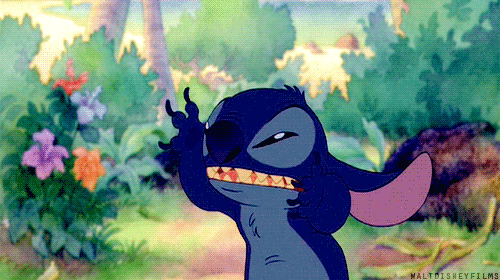I have the first track recorded for Amphibious. (Or is it Amphibian?) Some of that Radiophonic Workshop-ish horror soundtrack vibe that I like managed to sneak into it, so I wonder if things are going to more or less continue that way…
I have been going through my character roster in GW2, passing judgements and updating some specs. If you have both Path of Fire and End of Dragons, it’s not too difficult to gain enough extra Hero Points to complete two elite specs, so the process of reworking a level 80 character and also gearing them up a little more appropriately is not too strenuous. And then also updating their wardrobe and dyes because I unlocked more stuff… Fashion Wars it is.
And in the rest of this post, I’m talking about gender some more… but with maybe some breakthroughs.
I recently read Arcane Perfection, which was a mixed zine-like bag which I partially skimmed over… but there were mentions of various kinds of nonbinary identities, and that got me thinking about how I stopped trying to get more specific than “nonbinary.” It got me contemplating this stuff in shrine, having some sort of vision/idea/thing, poking around the internet, and putting some thoughts together.
I’ve seen it said that “nonbinary” is not a gender identity but a catch-all term for several more specific identities. But honestly… my thought is that genders are two things: what individuals personally feel/experience, and arbitrary categorization systems that society views them through.

I have also seen people who are frustrated that the term “nonbinary” defines people by what they are not. But for me, this is a feature and not a bug! My identity is “a thing of borders” and interstitial spaces. I feel like this has an importance other than simply trying to locate myself between masculine and feminine; betweenity itself is key. And this is how I started thinking in more xenogender-ish terms. Which is a rabbit hole.
(A betweenity example: the Equator. A circle, equidistant from Earth’s poles, that defines a plane that bisects the Earth into the Northern and Southern hemispheres. To think of those hemispheres as a binary seems to be common sense… but at the exact Equator itself one is in neither hemisphere, just as zero is neither positive nor negative. And we are larger than that infinitesimal imaginary plane, so to be “at” the Equator is to be astride it, both Northern and Southern. And the actual location of the Equator is arbitrary; since the real poles move cartographers have come to a useful international consensus about where the Equator is.)
(I note that dividing things in “two” this way — or separating them to insert interstitial space in which to live — is common in creation myths. This kind of betweenity can also relate to liminality, though they’re not exactly the same.)
Peoples’ understanding and descriptions of gender in the 21st century have moved fast — at least, outside of the mainstream. My middle-aged Gen-X ass has found it difficult to keep up. Folks on Tumblr and Reddit have coined thousands of overlapping gender categories, xenogenders and microlabels, often with multiple flags and symbols each, and entire systems of categorization, over the last 20 years. There are, at the very least, dozens of them which could partially or completely apply to me (but I still find it unlikely that there is any single named category/identity that perfectly captures what I feel). And those accounts get deleted, moved, renamed, etc. While there are at least three different wiki projects trying to centralize that information, they all seem to lack a good intro or index page that makes the bewildering array more manageable.
As far as I can tell, this is mostly the work of neurodivergent and relatively young folks; it both has personal meaning for them and is fun (I get it, I’m a nerd who likes to create and categorize things; I enjoy sorting M&Ms…) But I started to get the sense that, despite a lack of a good “Neogender 101” introduction, there’s some stuff here that I might also find worth contemplation and usage. So I started digging and making some sense of it. And while I was at this yesterday, I happened to see that it was the Day of Xenogender Visibility. Nice.
I’m not going to be the one to write that guide. But, mostly to help myself here, I’m going to outline my own gender experience a bit…
- I feel little to no connection with most “masculine” traits. A lot of masculine behavior seems alien or gross to me, even where it’s not specifically “toxic”.
- Some feminine traits appeal to me much more… and some don’t. But I’ve never felt like I’m a woman or “should have been” a woman etc. I recognize that my alignment here is toward a sort of archetypal (and somewhat mysterious and otherworldly, but kind and compassionate) ideal than actual womanhood.
- I felt this way at a young age, before I was able to fully grasp or express it very well even to myself. In my teens I started to think of it in sort of bigender-ish terms but knew that wasn’t quite right. I just… left that thought on the back burner for many years. I was ignorant about gender and had internalized transphobia as well as homophobia back then.
- I don’t think I’ve physically felt dysphoria per se. It’s just that some aspects of my body/appearance are not what I would prefer if I had my choice, and I feel like that appearance misleads people into perceiving someone different than I feel like. In theory, I like the idea of inhabiting a body that is on the just-feminine side of neutral or androgynous. In practice, I do not want to take strenuous measures to change the body I have.
- I also don’t in particular feel a need to change my name. I prefer it if folks used they/them pronouns, but he/him, or even other pronouns, don’t actually bother me.
- I would not describe myself as agender — but I often feel like gender is not highly relevant to me personally. (I ignored it for so long after all, and even after finding that I was nonbinary, I generally just wrote off caring whether anyone else knew about it.) I also feel that society assigns far too much significance and baggage to it.
- Religious/magical practice does make me want to personally embrace and express my own gender more, as well as increasing that feeling of FIN (feminine-in-nature) alignment.
- I believe that my gender was an intentional gift or design choice on the part of my gods — not their mistake, not me being broken or misguided. That I’m meant to be this way and celebrate it. And that this design is a gender “of borders.”
- In terms of presentation/expression, in this body I don’t feel that trying to dress in a clearly femme or androgynous way works for me. I want to simultaneously express myself and be obscure and mysterious.
- In terms of sexuality, I’m attracted to women and feminine-presenting individuals. Happily monogamous. (I used to worry about being perceived as “gay” and be offended by the implication, but I’ve gotten over it; the idea of straight/bi/gay makes less sense as a nonbinary person anyway.)
Okay, so, looking through lists, I wrote down a few terms that particularly called to me. This is not intended to be a complete list, and it’s really for my own use and anyone who happens to be curious about what I think — I don’t demand that people recognize super-niche gender identities. (What I do demand is… respect everyone, and recognize that gender is both personally felt and an artificial social construct and just give everyone a break about it.)
spiritine, spiric, spiritgender, SPXIN: a category for genders that connect to one’s spirituality or religion. Well, yeah.
kenochoric, kenic, kenoine, KEIN: a category that is loosely associated with the word “kenopsia” (the feeling of eeriness and mystery in an abandoned place). The coiner gives a list of words/vibes that go along with this but says, don’t take any of it too literally — and also insists that it is not restricted to describing xenogenders or even nonbinary usage. Probably the reason this most appeals to me is one of its subcategories:
obscurian, OBSIN: genders that are inherently uncertain and cannot be exactly named/quantified or understood. It has a nice black to purple gradient flag with a (possibly open/possibly closed) eye symbol. Neat. “obscuriir” is a combination of obscurian with spiritine.
aetherium: a xenogender with a celestial/otherworldly feminine essence that is not connected to binary womanhood. Not sure the name is my favorite, but that does also fit.
…overall, I’m mostly just going to say I’m nonbinary. That is confusing enough for most people. But I’ll keep poking about in this space, and thinking these thoughts.











